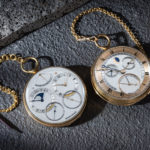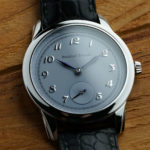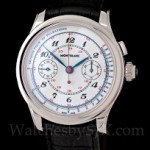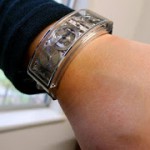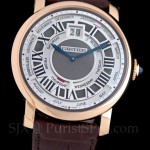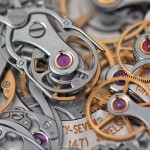Watchmaking: A Primer on Frosting by a Watchmaker
The heroes and sidekicks of finishing.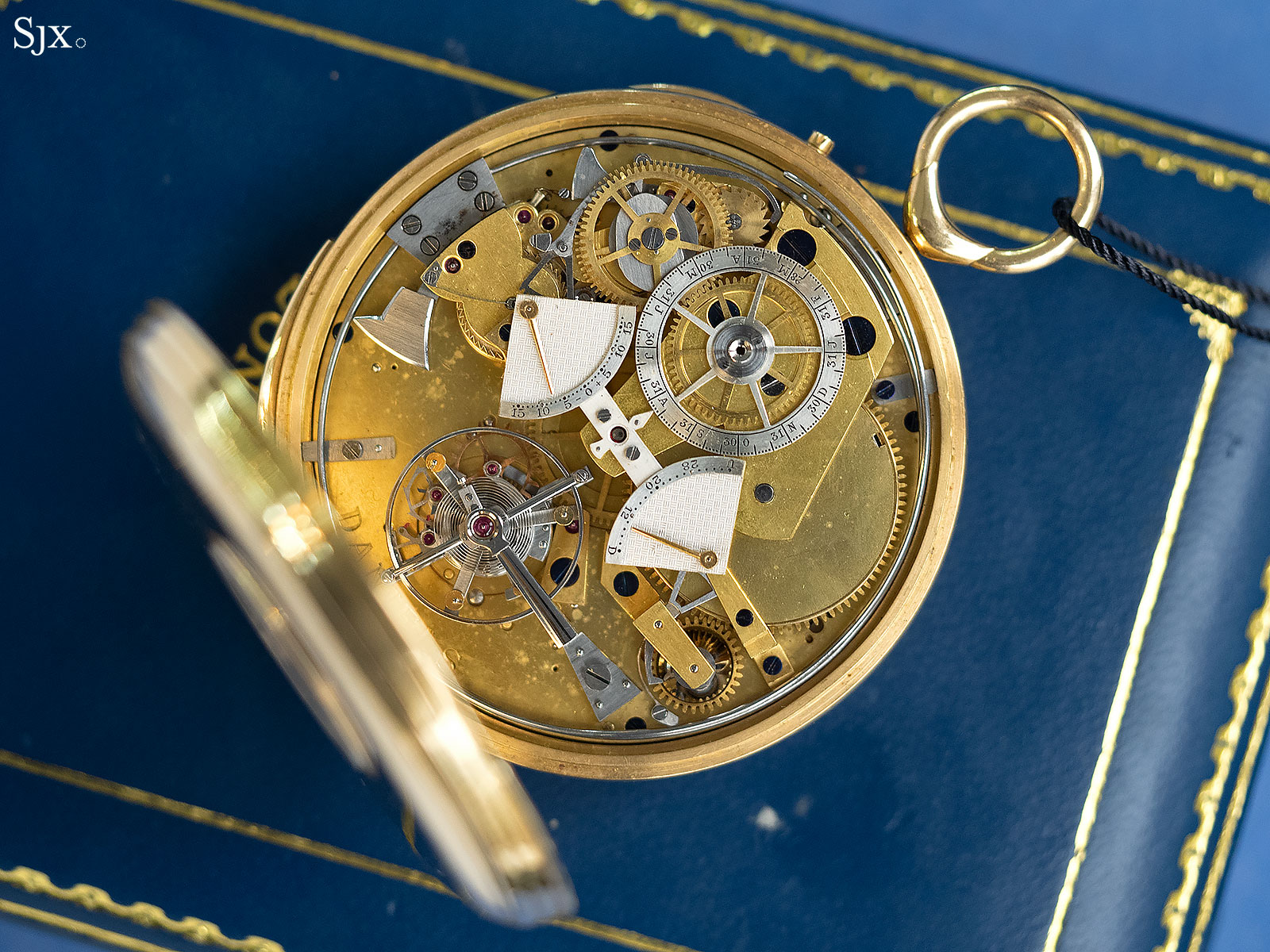
Fine finishing in high-end watchmaking automatically brings to mind polished bevels, black-polished steel, Cotes de Geneve, blueing, and even perlage. But less thought is given to frosting, even though it is prominent in the grandest of timepieces made by leading independent watchmakers.
Put simply, frosting is the treatment of a metal to create an uneven, pitted surface. A beautifully rough finish, frosting dulls the appearance of the component it is applied to.
Many brands rely on the technique for decoration, but often in strikingly different forms. Akrivia, Greubel Forsey, Masahiro Kikuno, and Roger W. Smith are all known for their frosted finishes, but each differs from the other in technique and aesthetic effect.

The frosted bridges on the front of the Greubel Forsey Hand Made 1
Heroes and sidekicks
When it comes to finishing methods in horology, I like to separate them into two categories: heroes and sidekicks. The sidekicks – such as perlage, graining, and of course frosting – are the methods that help the heroes stand out. Do not think any less of the sidekicks because without them, the heroes would not get the attention they deserve.
The heroes are the methods that make you wonder: “This is beautiful – how did they do that?”
Black polishing, blueing and engraving are just a few of them. As in the comic books, heroes and sidekicks work together to make each other look good. But as is frequently the case in fiction, sidekicks are often forgotten.
Take for instance mirror polishing and frosting. Mirror-polished surfaces stand out against the muted, frosted components, creating great visual contrast. The most skilled of watchmakers are able to polish bevels and countersinks on a component that has already been frosted – an achievement that is very hard to pull off.
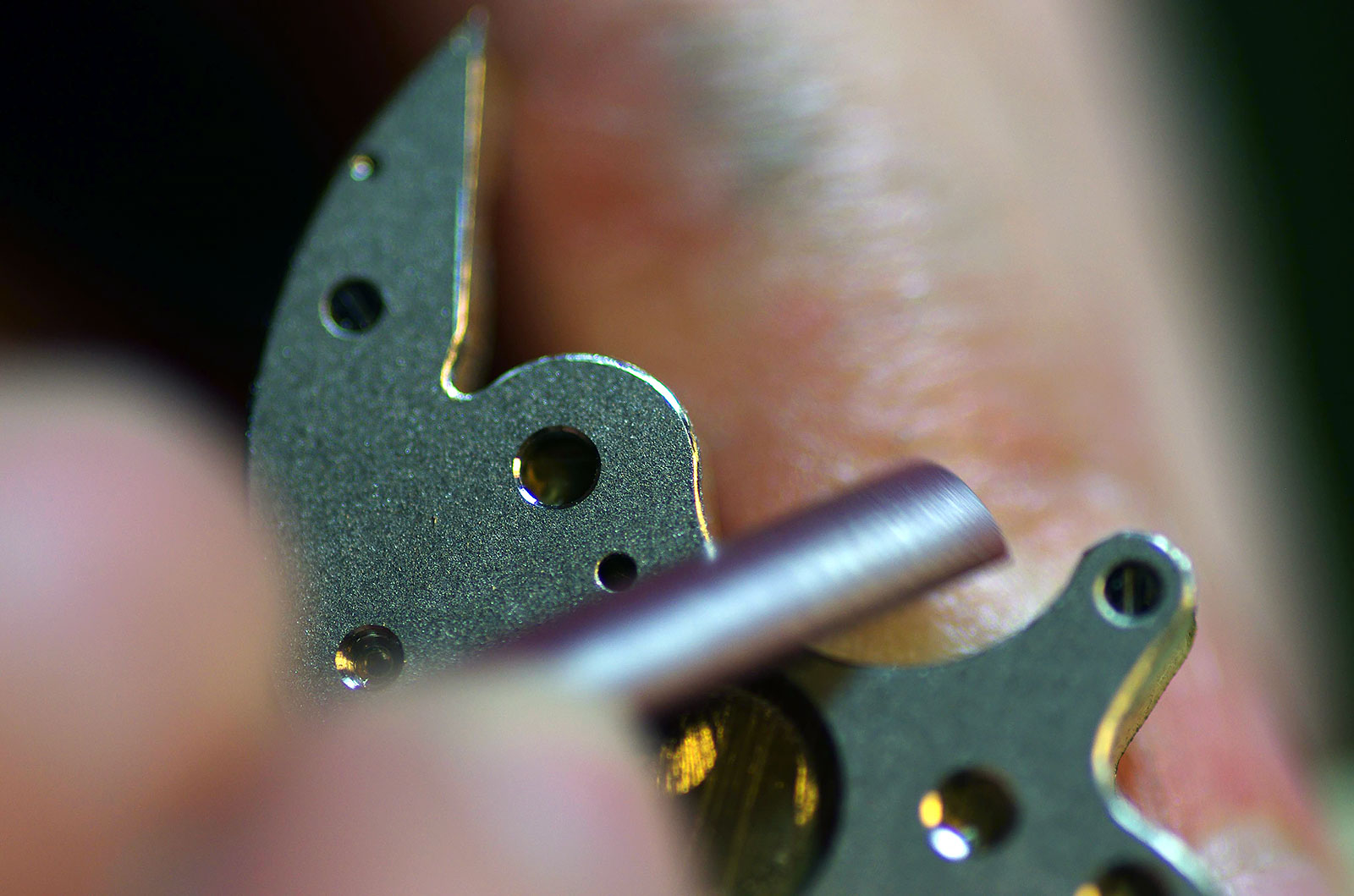
Masahiro Kikuno polishing the bevelled edge of a frosted bridge. Photo – Masahiro Kikuno
If the watchmaker is not clinical with the polishing – which is done with an abrasive polishing compound and peg wood – and unknowingly rocks from side to side on the bevel, the two finishes will “bleed” into each other. This unsightly effect blurs the line between the sharp, polished bevel and the frosting.
And for the owner of the watch, the “bleed” is be readily apparent; through a loupe it is obvious once you know what to look for. As a result, top independent watchmakers, who sometimes have the most critical customers, pay an inordinate degree of attention to the fine details like this.
Many ways to the top
There are many ways to frost a movement component. Some are quick, some take hours upon hours to complete, while others are old, and yet others have been brought into the 21st century in wonderful ways.
The most common – and arguably the easiest – is the blasting chamber. This way of frosting is most commonly used where batches of components have to be finished one after another, and a consistent, repeatable finish is desired.
Here you hold the component by hand, or hang it from a wire frame, within the chamber and point a blasting gun at it. The gun sprays a fine aluminium oxide compound at a steady pressure onto the component, with the aluminium oxide particles creating a fine pitting on its surface.
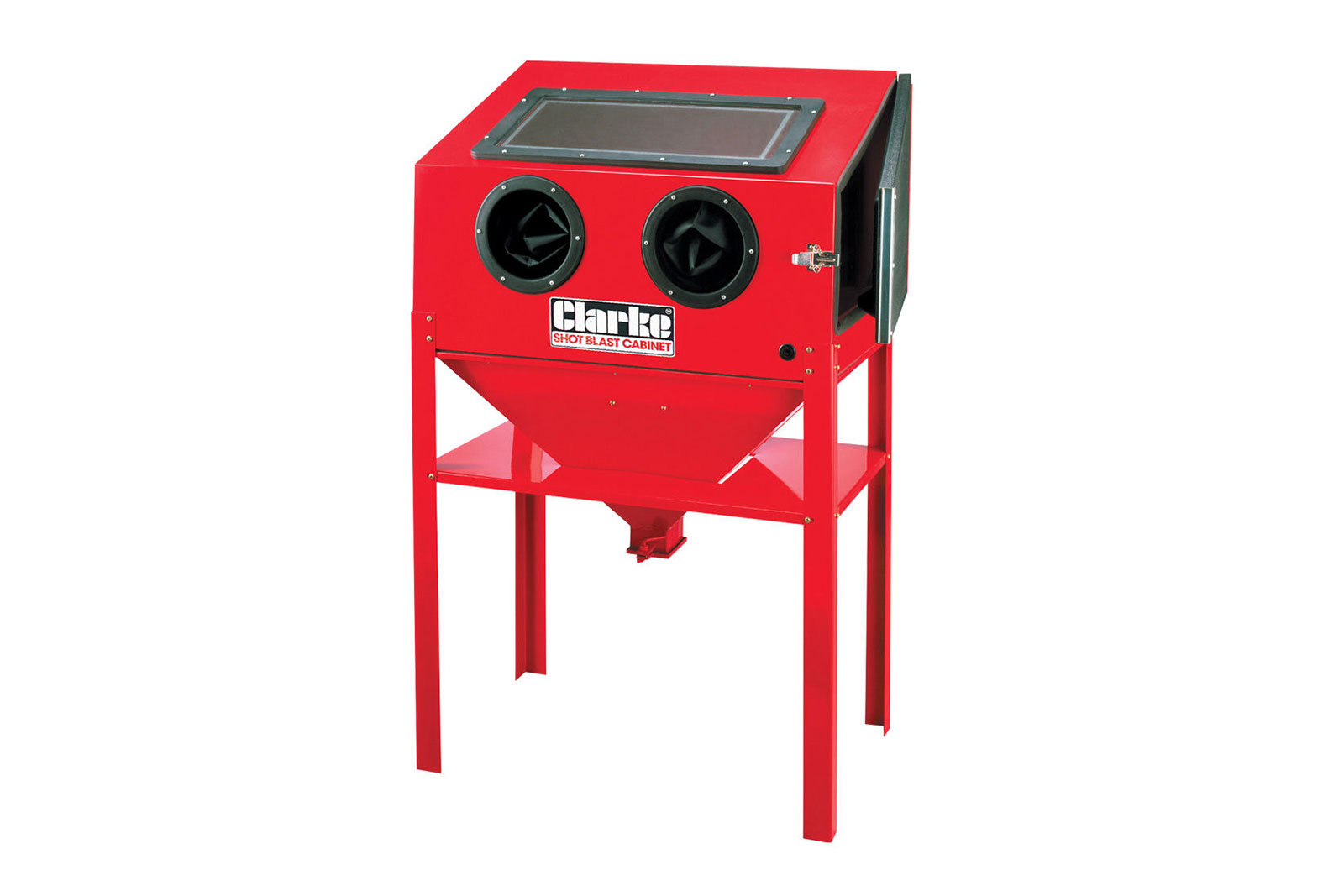
Clarke SB30 Large Blasting Cabinet. Image – Machine Mart
While it sounds easy on the surface, there are nuances for the correct technique. To start with, the component needs to be thoroughly cleaned and dried before this process; and crucially, it must not be touched by bare hands. Oils from the fingertips will etch into the bridge and if blasted over, it is almost impossible to remove the imperfection, rendering the part useless.
Then the blasting gun should be held about 30 cm away from the component. While spraying, the component should be rolled in the wrist slowly as if you were whisking eggs.
And to frost all of the surfaces of the component, rotate the part 90 degrees, spray, and continue to repeat the process until you’re back to where you started. If done correctly, the result is an even frosting, even in the nooks and crannies of the bridge or main plate.
The artisanal
I will now move onto the more manual methods of frosting that require more time and attention from the watchmaker. When studying at the British School of Watchmaking in Manchester, I was taught a remarkably simple but effective method of frosting bridges and plates. Just as with the blasting chamber, aluminium oxide is the key ingredient, but applied differently.
Once again the component has to be cleaned thoroughly as the first step, and gloves have to be worn at all times when handling the component.
A sheet of thick glass is laid on the workbench and a small amount of aluminium oxide is poured onto the glass. Then the surface of the component is lowered into the compound – with gloved hands of course. A light pressure is applied while slowly moving the component in a figure of eight.
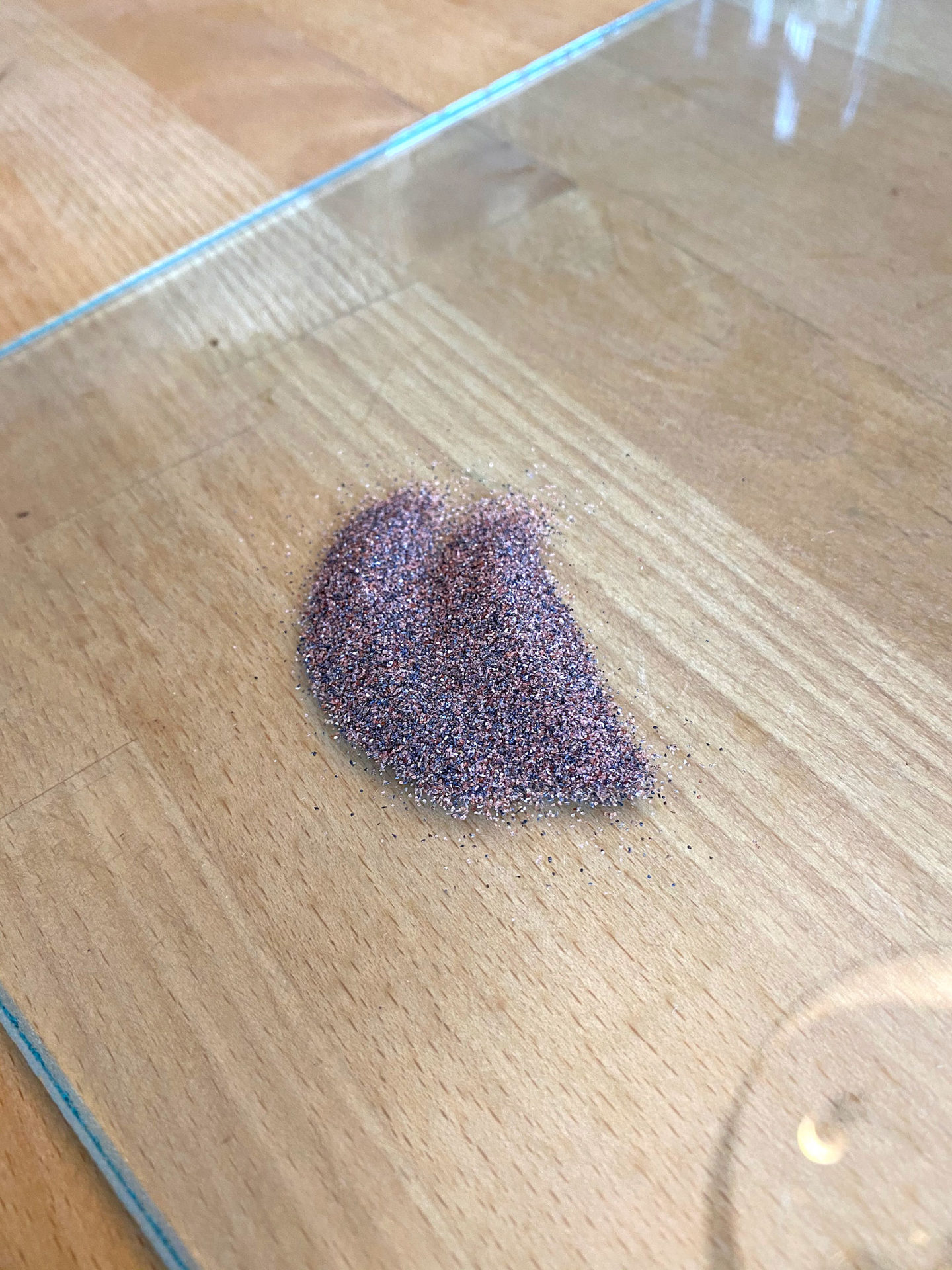
Aluminium oxide compound. Photo – the author
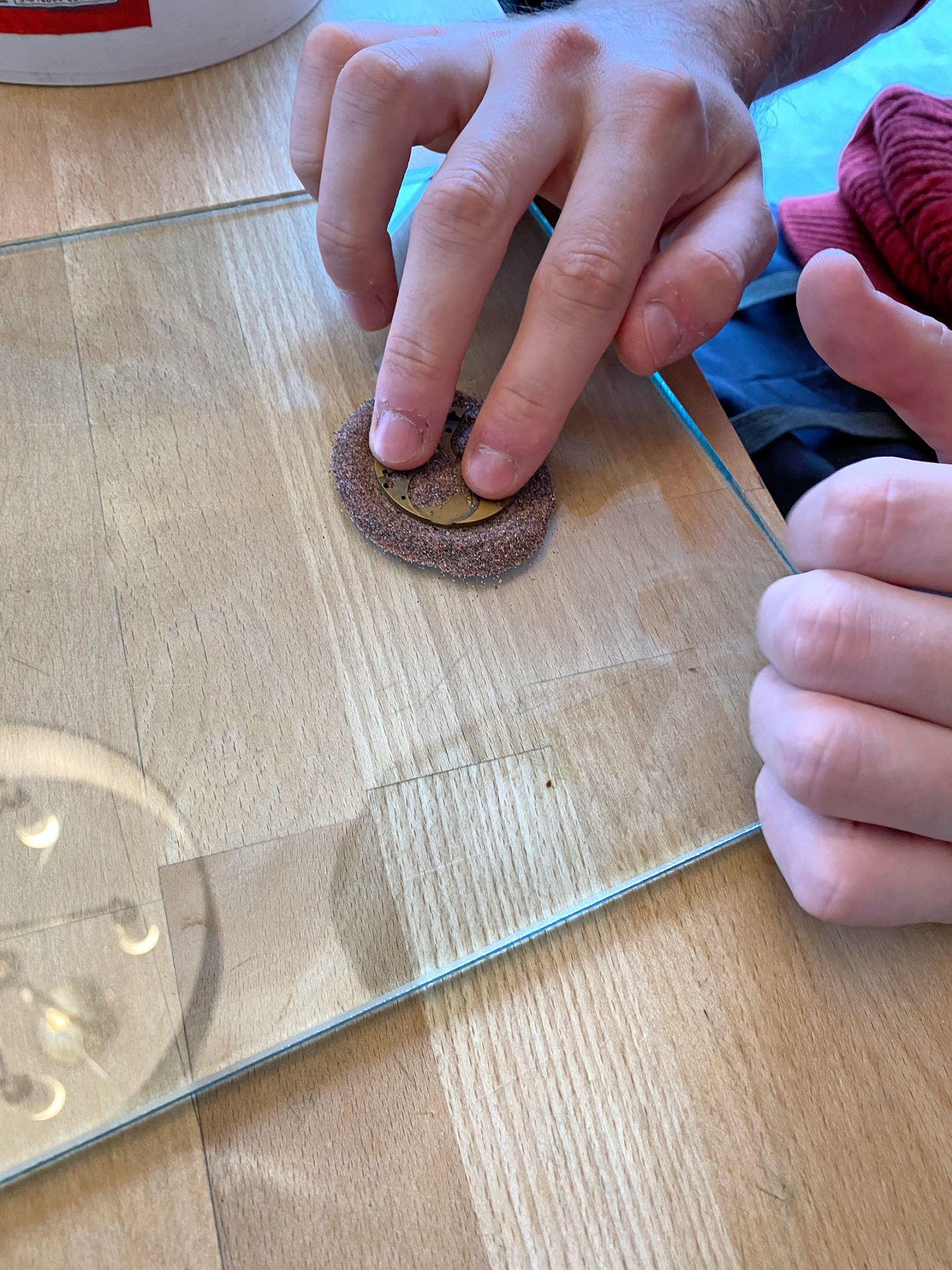
The author demonstrating the technique with a prototype component. Photo – the author
As with many artisanal decoration techniques in watchmaking, the process is tangible, yet hard to describe exactly. As you move the component on the glass, you can feel the aluminium oxide evenly spread out, at which point you can speed up if feeling confident.
After a couple of minutes, the compound will have degraded to the point where it has to be disposed of and replaced, so the process starts anew until the correct frosting surface is achieved.
It is critical to keep the component flat on the glass sheet at all times; even if it is lifted at the slightest angle, the result is an uneven-looking frosted finish. In fact, lifting the part may even wear the component away during the process, which in severe cases calls for the part to be scrapped.
The unusual
The following two methods are far less common, though both create interesting and unique results. One is a technique used by Japanese watchmaker Masahiro Kikuno that I have not seen used anywhere else; the unusual method is almost as beautiful as the end product.
It starts with a bucket of water mixed with garnet sand, a common industrial abrasive. In a technique borrowed from jewellery making according to Mr Kikuno, the component is held just above the surface of the water in the bucket.
The liquid mixture is scooped up with a bottle and then poured from high above onto the component below. The height allows the compound to gain enough velocity so that when it hits the component, it peppers the surface with the compound, leaving a subtle and elegant finish, much like the rest of Mr Kikuno’s watches.
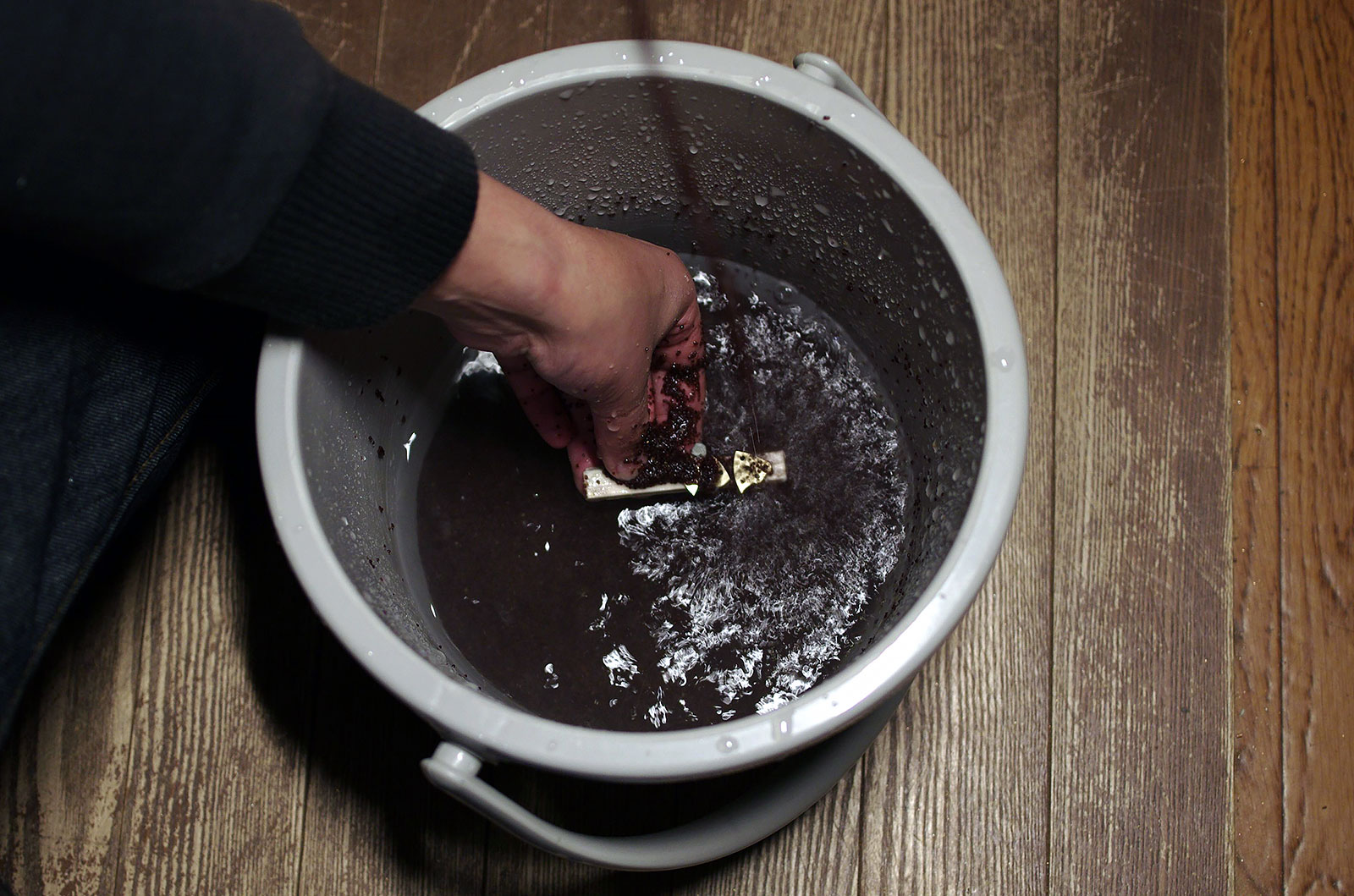
Masahiro Kikuno performing “gravity frosting”. Image – Masahiro Kikuno
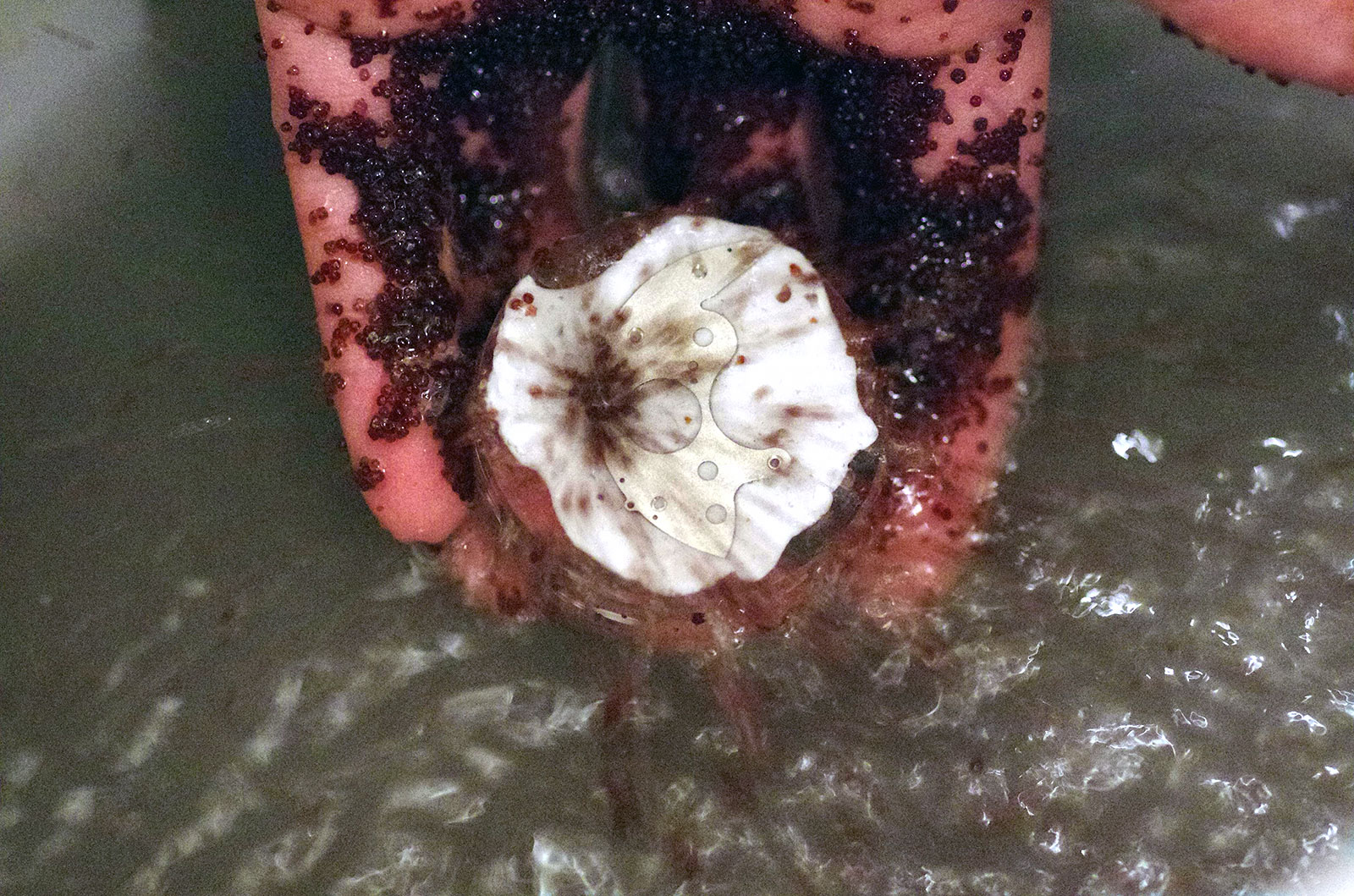
The mixture containing garnet sand is poured into the bridge. Photo – Masahiro Kikuno
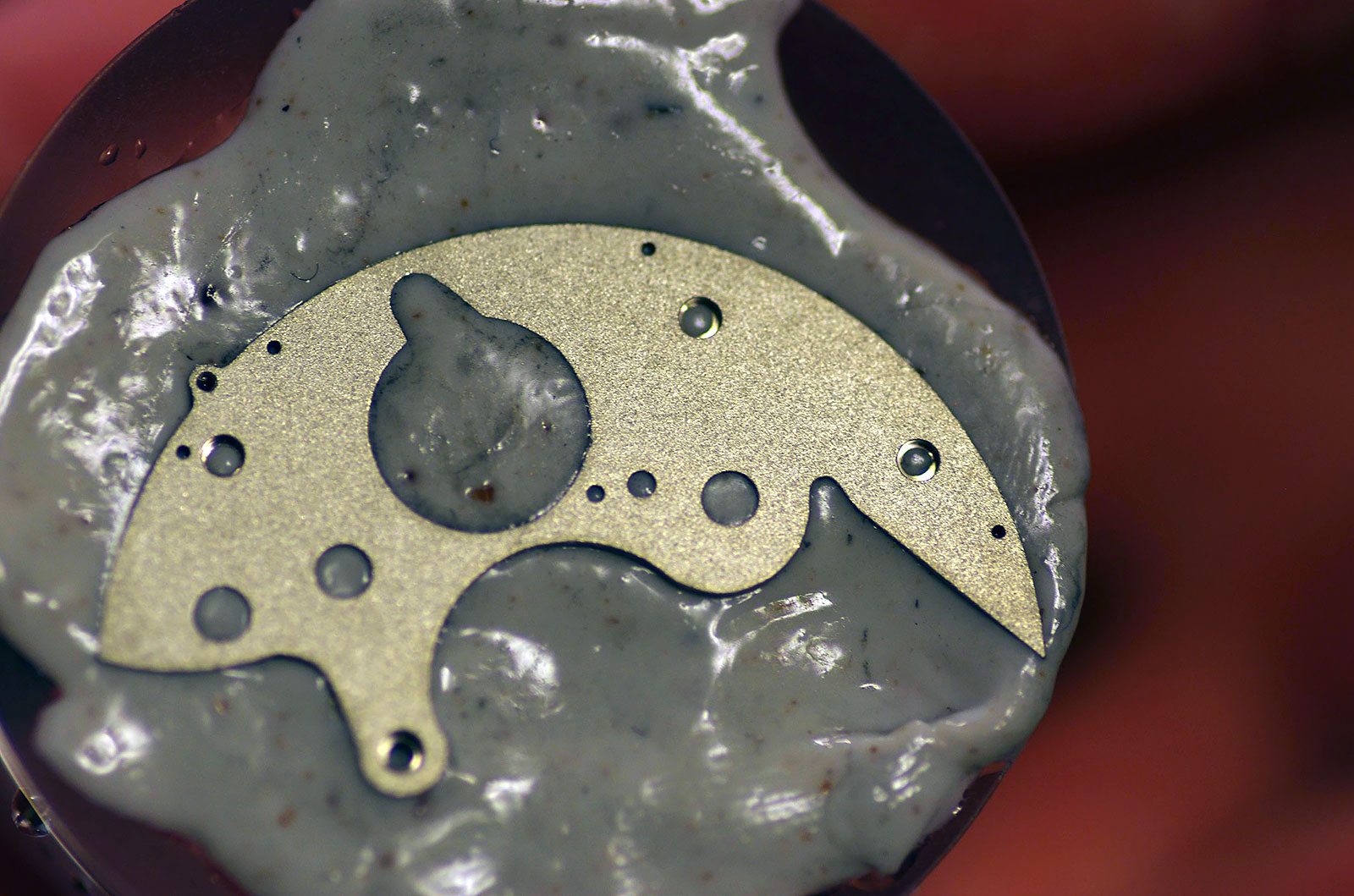
The bridge after the frosting process. Photo – Masahiro Kikuno
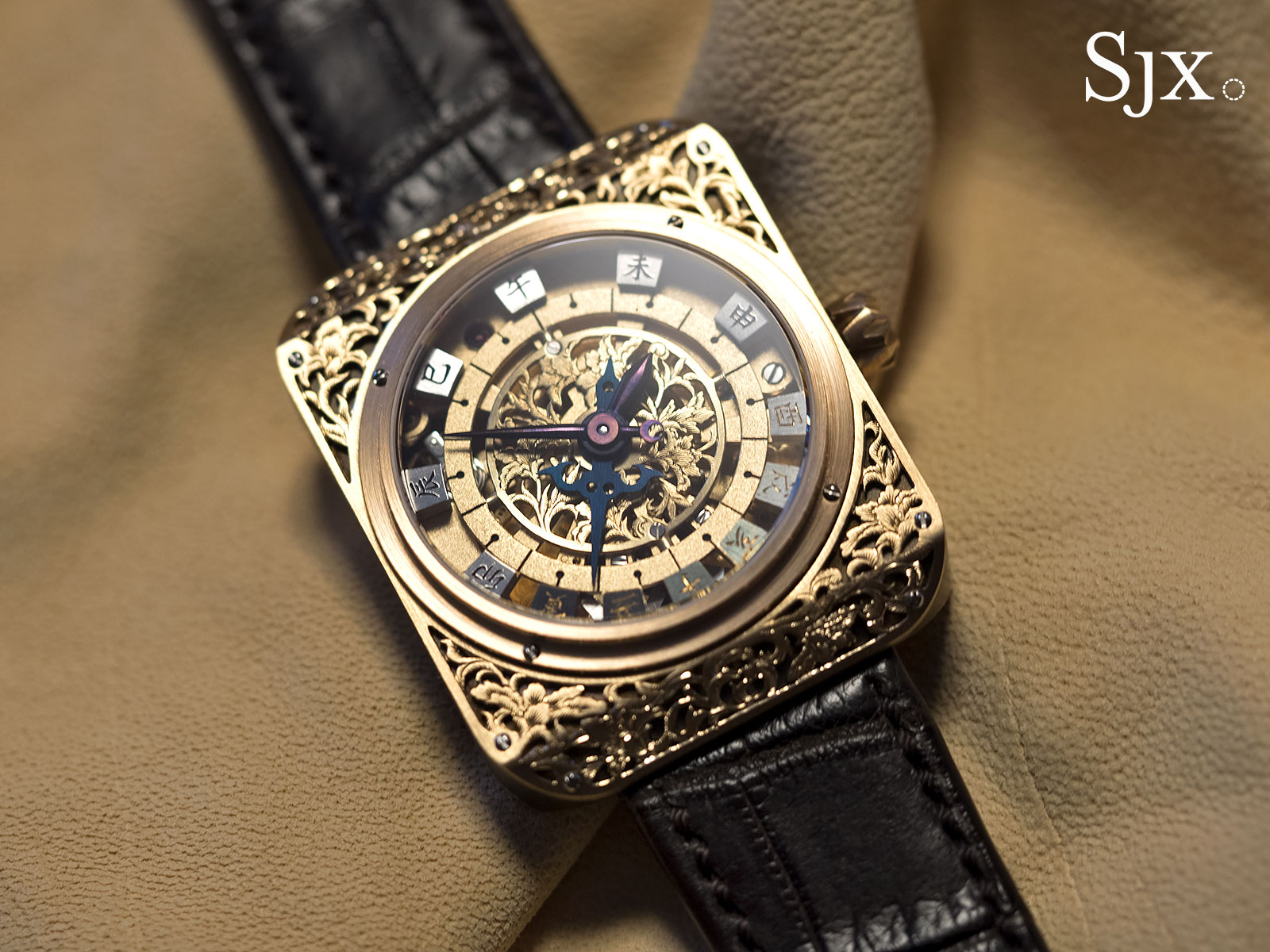
Masahiro Kikuno’s signature Wadokei wristwatch that tells traditional Japanese time, where the days vary with the seasons
The next frosting method is most famously used by the amazing team at Akrivia, helmed by the great Rexhep Rexhepi. On several of its AK series watches, including the AK-02 and AK-06 – and the one-off Chronometre Contemporain “Only Watch” – Akrivia uses a hammering method to produce an aggressive frosting, which in my opinion elevates the finish from sidekick to true hero.
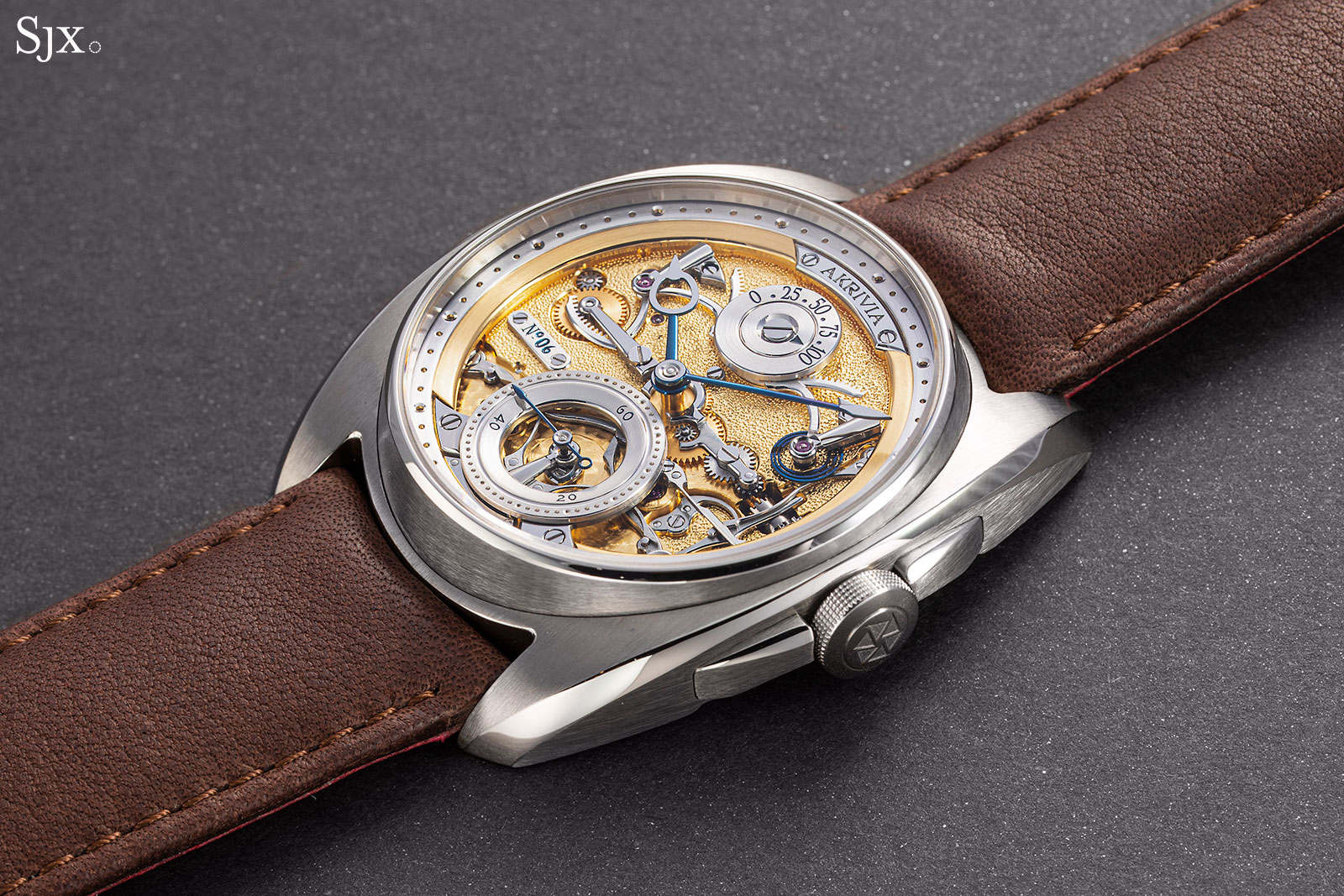
The Akrivia AK-06
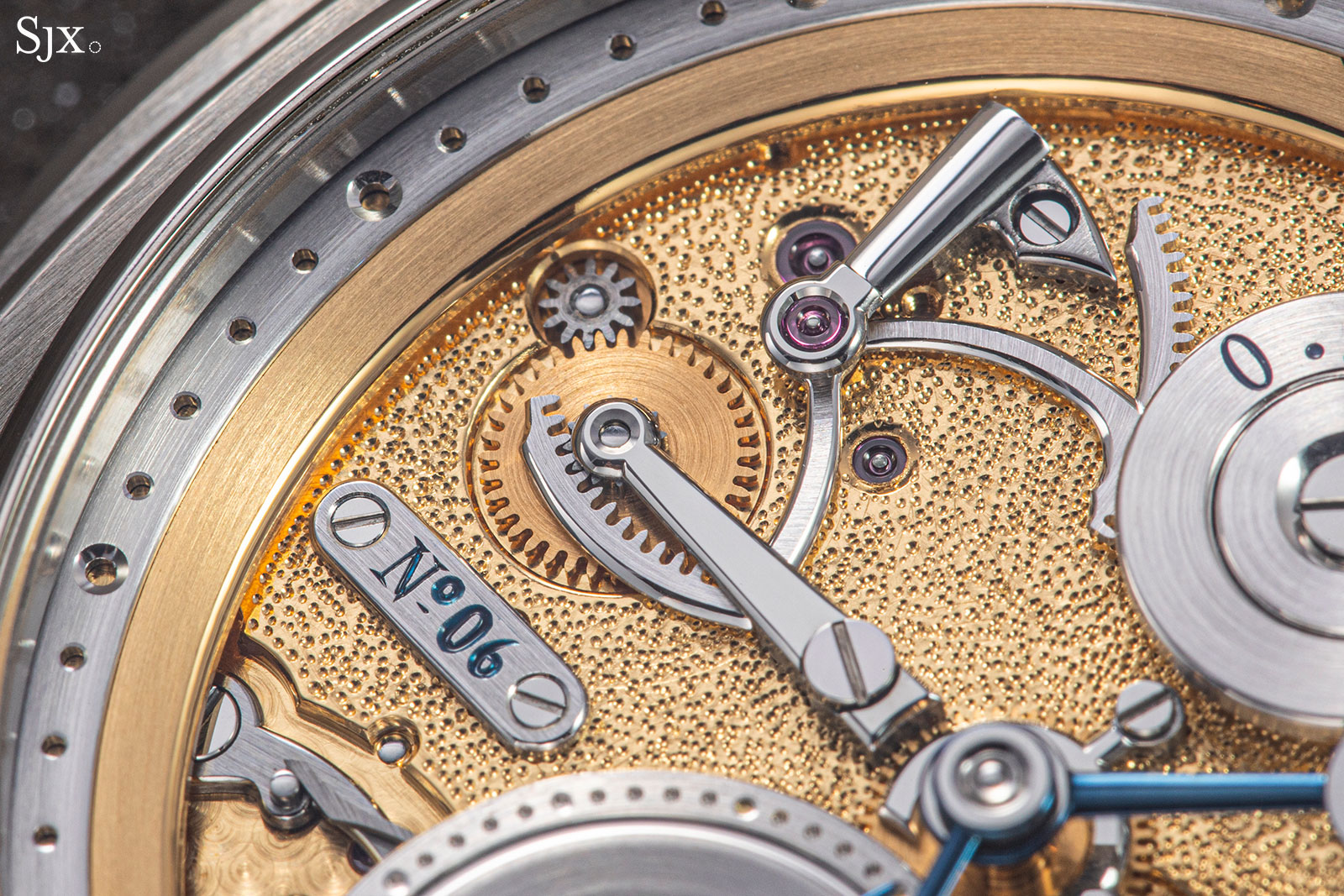
The steel racks for the power reserve indicator on the AK-06, with the hammered base plate underneath
In images shared by the brand, the Rexhepi brothers can be seen at their benches armed with just a hammer and pointed stake. They meticulously tap the stake hundreds of times on one component to create the stunning, granular surface that has become synonymous with Akrivia.
The beauty of this method is that it is done manually by one watchmaker, which means the irregularities in the size and spacing of the divots on the surface are discernible. While watchmakers are always chasing perfection, Akrivia has embraced the randomness of manual technique and turned it into something that is close to perfect but still human.
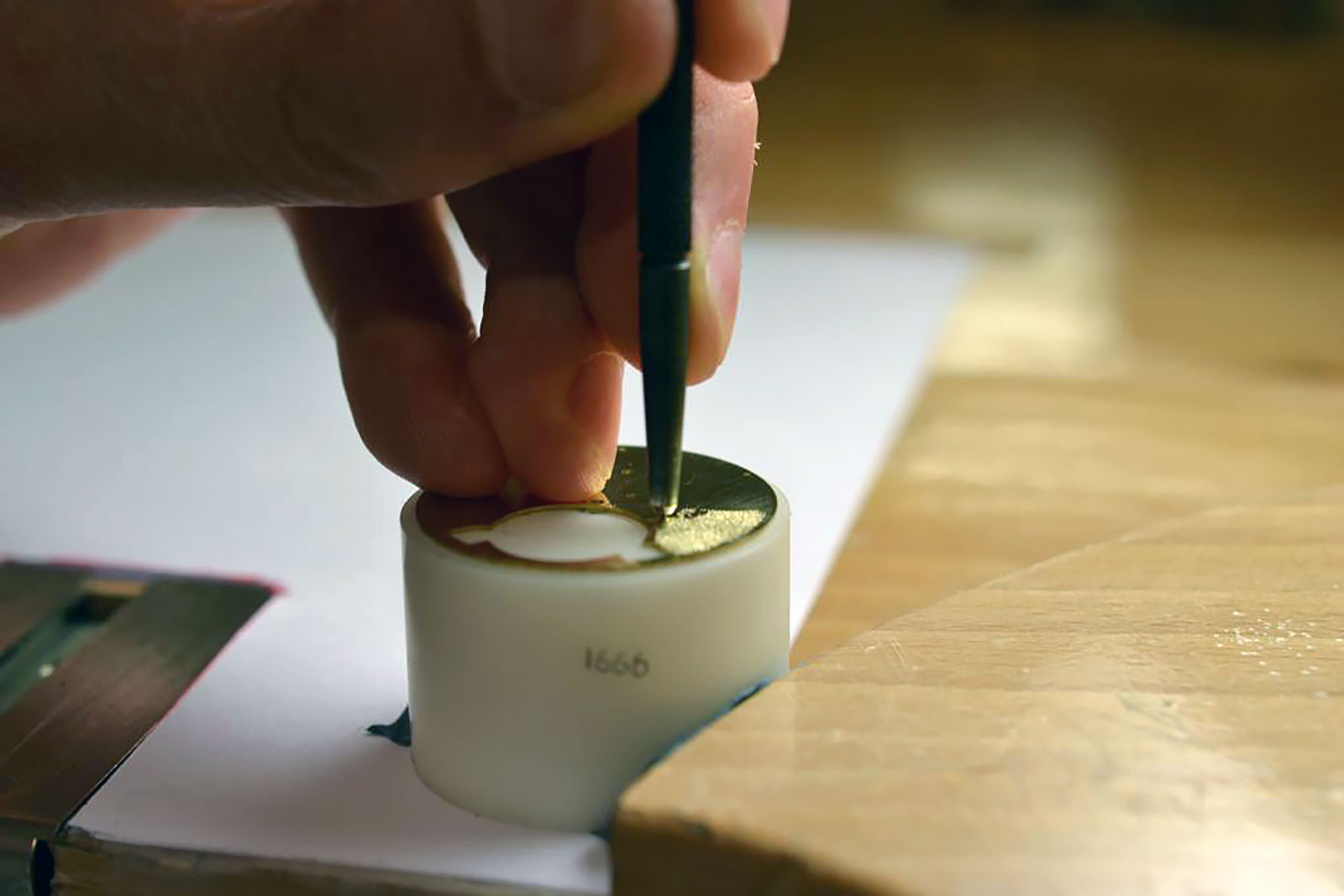
Hammering the dial. Photo – Akrivia
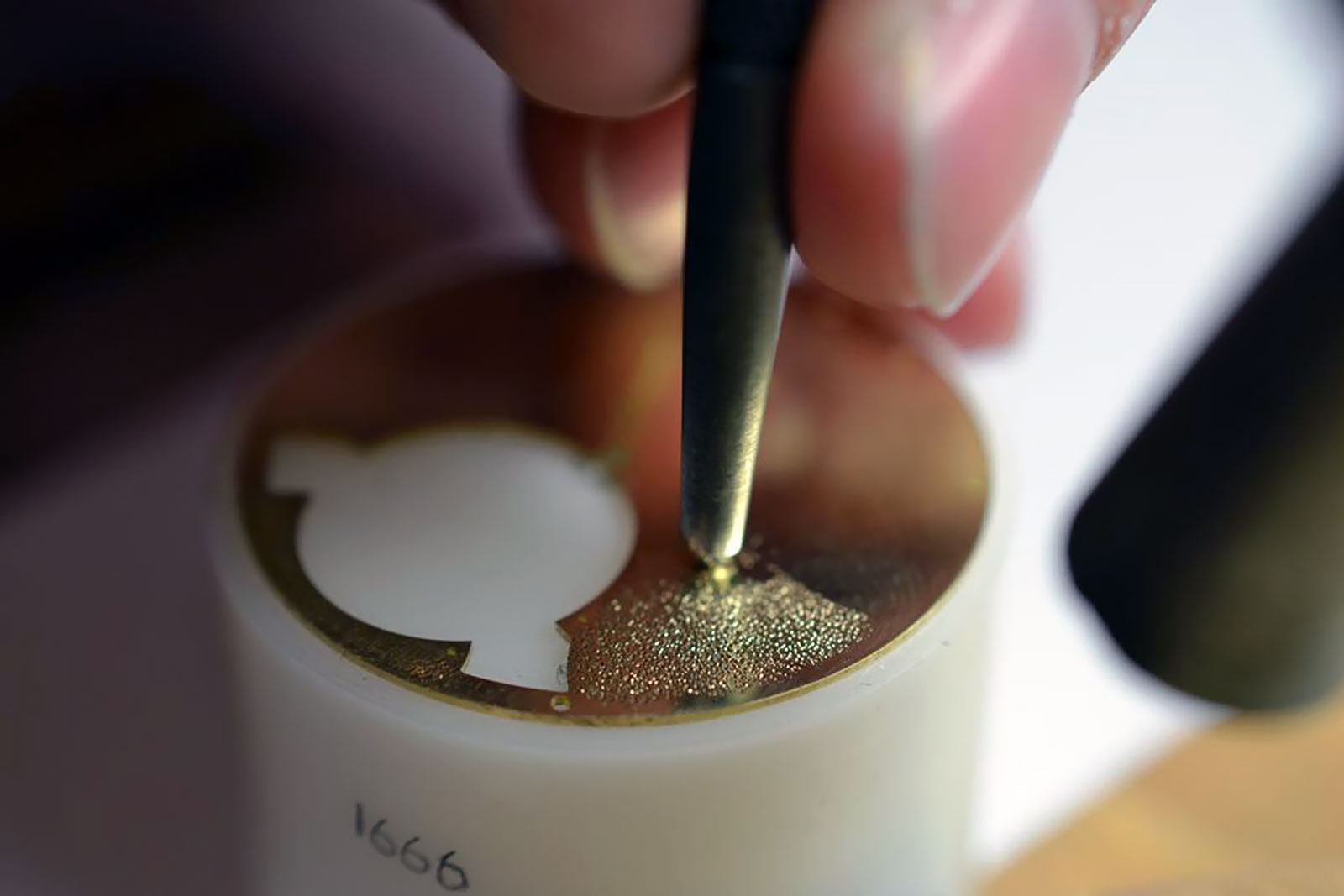
A dial for an AK-02. Photo – Akrivia
And from centuries past…
Finally, a truly classic method of frosting is the acid solution to create the pitting on components. Explained in a copy of the Horological Journal published by the British Horological Institute (BHI) many years ago: simply mix nitric acid and muriatic acid, dip the components in the mixture for a few seconds, rinse in water, and then brush in a circular motion with a metal brush.
Another method of acid etching is detailed in Watch and Clock Escapements, a 1904 book that’s available online as part of Project Gutenberg, an online repository of books. First, the component in question has to be prepared correctly, with all holes drilled to final size and engravings in place. It is not necessary that the brass component be polished but all the deep marks and scratches should be removed.
Any surface that should not be frosted has to be painted with shellac dissolved in alcohol with some lampblack, to create a protective later that prevents the surface from being frosted. The layer of shellac does not need to be thick but it must be completely dry before the process starts.
Then place 2 oz of powdered gum mastic, a natural resin from the mastic tree, in a sieve and sift the mastic powder onto the component. Next, heat the component gently, bringing it to 250°F, or 120°C, which causes the mastic particles to stick to its surface.
Then dip the part into nitric acid for 15 to 20 seconds, rinse well in water and dry. Next, use turpentine to remove the mastic. The entire process must be repeated three to four times to achieve an even finish.
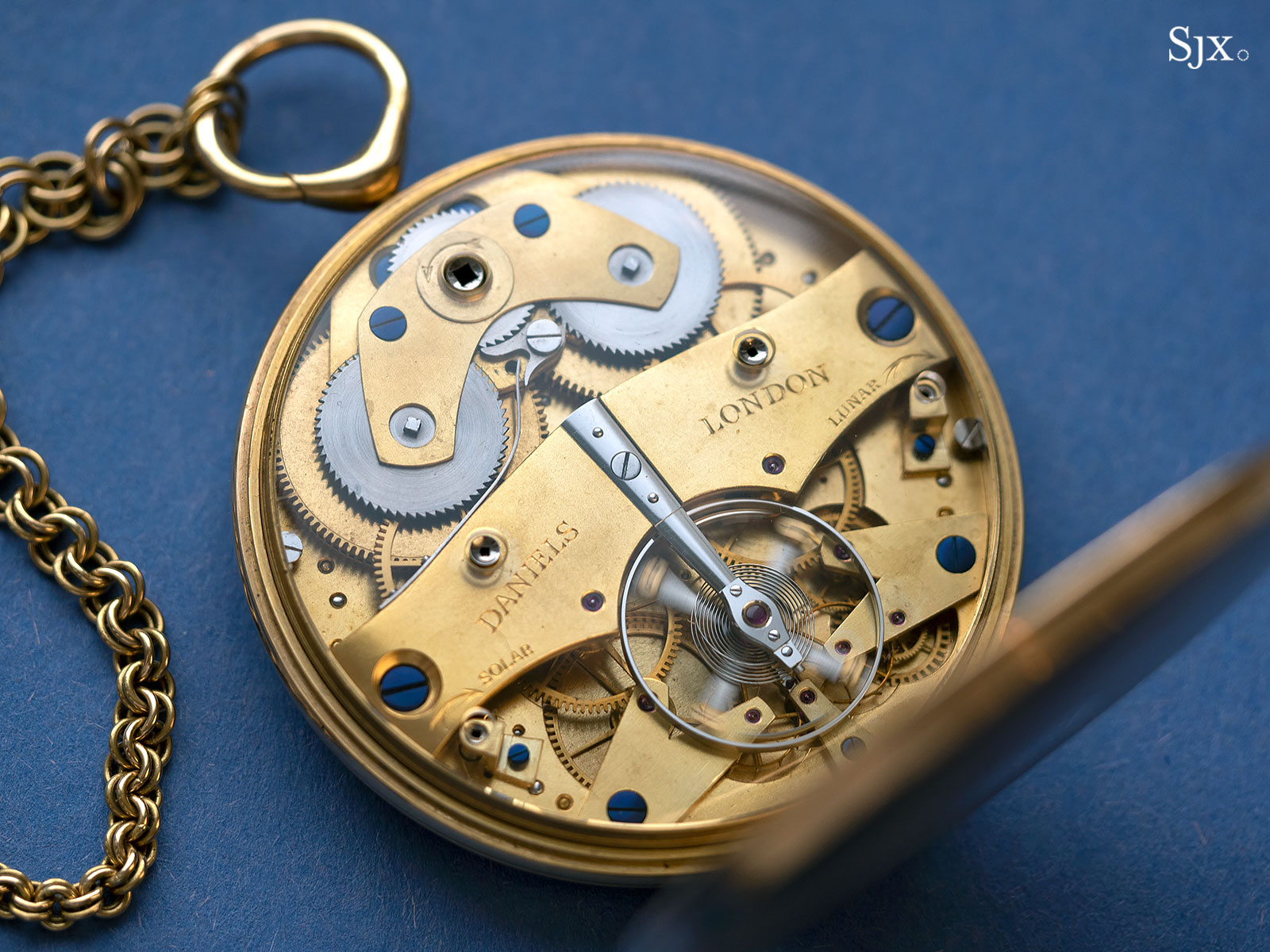
The movement of the George Daniels Space Traveller’s Watch, with a frosted finish accomplished by brushing
While anachronistic and essentially extinct in modern watchmaking, the mechanism of this technique is simple. The acid pits the brass that is not covered by mastic particles, resulting in “islands” protected by the mastic particles that are surrounded by pitted brass.
Next time you are looking at an Akrivia or Roger W. Smith, look past the polishing and the flash – a lot of watchmakers can do that well today – and examine the sidekicks to see how well executed they are. If a watchmaker takes the time to execute something so simple so exquisitely, then they truly care about quality and the collector who will own the watch.
Back to top.

